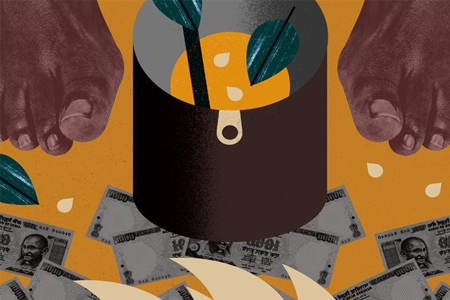In an effort to combat corruption, tax evasion and counterfeiting, Indian Prime Minister Narendra Modi, in his Nov. 8 televised address, announced the demonetization of India's 500 and 1,000-rupee notes. All 500 and 1,000 rupee banknotes, which made up 86 percent of the country's currency, were in one fell swoop, no longer recognized as legal tender.
The government's sudden decision to withdraw large-denomination currency from circulation sent shockwaves throughout the country’s economy and has caused enormous hardship to millions of people in the country's predominantly cash-based economy.
Chief Economist and Senior Vice President of the World Bank, Kaushik Basu, in a New York Times op-ed titled, "In India, Black Money Makes for Bad Policy," has strongly criticized the policy, rightly pointing out that it’s “mostly hurting people who aren’t its intended targets.” According to him, demonetization will put only a temporary dent in corruption, if even that, and it may rock the entire economy.
Please read Dr. Kaushik Basu's excellent op-ed below.
THE OPINION PAGES | OP-ED CONTRIBUTOR
In India, Black Money Makes for Bad Policy
By KAUSHIK BASU, NOV. 27, 2016

NEW DELHI — On Nov. 8, the Indian government announced an immediate ban on two major bills that account for the vast majority of all currency in circulation. Indians would have until the end of the year to change those notes for other bills, including newly minted ones.
On Wednesday, the government released via a smartphone app called “Narendra Modi,” named after the prime minister, the results of a survey purporting to show 90 percent support for its so-called demonetization policy.
The poll was rightly criticized. In the two weeks after the measure was announced, millions of Indians stricken with small panic rushed out to banks; A.T.M.s and tellers soon ran dry. Some 98 percent of all transactions in India, measured by volume, are conducted in cash.
Demonetization was ostensibly implemented to combat corruption, terrorism financing and inflation. But it was poorly designed, with scant attention paid to the laws of the market, and it is likely to fail. So far its effects have been disastrous for the middle- and lower-middle classes, as well as the poor. And the worst may be yet to come.
